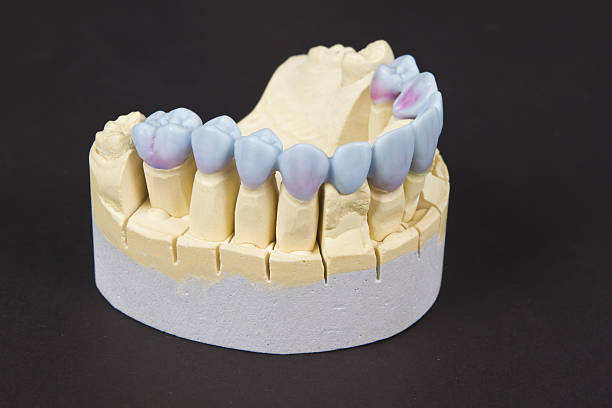Orthodontic treatment, while effective in aligning teeth and improving smiles, often comes with discomfort, especially when braces are involved. Dental wax, a small yet mighty tool, can significantly alleviate this discomfort. In this comprehensive guide, we’ll explore what dental wax is, how it helps with braces discomfort, what to do if it doesn’t help, how to apply it correctly, and the do’s and don’ts of using dental wax. By the end of this blog, you’ll have all the information you need to make the most of dental wax and ensure a more comfortable orthodontic experience.

What is Dental Wax?
Dental wax, also known as orthodontic wax, is a soft, malleable material used to protect the tissues inside your mouth from irritation caused by braces and other orthodontic appliances. Made from natural waxes such as paraffin or beeswax, dental wax is safe to use and even swallow in small amounts.
Dental wax creates a smooth barrier over the brackets and wires of braces, preventing them from rubbing against the inner cheeks, lips, and gums. It’s a temporary solution that provides immediate relief from discomfort and helps to prevent sores and irritation during orthodontic treatment.
How Does Orthodontic Wax Help with Braces Discomfort?
Orthodontic wax is specifically designed to ease the discomfort associated with braces. When you first get braces or have them adjusted, the brackets and wires can cause friction and irritation against the soft tissues in your mouth. Here’s how dental wax can help:
- Reduces Friction: By creating a smooth surface over the sharp edges of brackets and wires, dental wax reduces the friction that causes irritation and soreness.
- Prevents Sores and Ulcers: Consistent use of dental wax can help prevent the development of painful sores and ulcers inside the mouth.
- Promotes Healing: If you already have sores or irritation, using dental wax can protect the affected area, allowing it to heal without further aggravation.
- Provides Comfort: Dental wax offers immediate relief from the discomfort caused by braces, making it easier to eat, speak, and go about your daily activities without pain.
What to Do If Dental Wax Doesn’t Help?
While dental wax is effective for most people, there are times when it might not provide sufficient relief. If you find that dental wax isn’t helping, here are some steps you can take:
- Reapply the Wax: Sometimes, the wax may fall off or become less effective over time. Try cleaning the area and reapplying a fresh piece of wax.
- Use Orthodontic Silicone: Orthodontic silicone is a stronger alternative to dental wax and can provide better protection and longer-lasting relief.
- Adjust Your Braces: If the discomfort persists, it might be due to an issue with the positioning of your braces. Contact your orthodontist to schedule an adjustment.
- Try Pain Relief Products: Over-the-counter oral gels and rinses designed for mouth sores can provide additional relief from irritation and pain.
- Consult Your Orthodontist: If the discomfort is severe or persistent, it’s essential to consult your orthodontist. They can assess the situation and make necessary adjustments or provide alternative solutions.
How to Apply Wax to Braces
Applying dental wax to your braces is a straightforward process that can be done in a few simple steps:
- Wash Your Hands: Start by washing your hands thoroughly to ensure you don’t introduce any bacteria into your mouth.
- Brush Your Teeth: Clean the area around the braces where you’ll be applying the wax. This helps the wax adhere better and ensures good oral hygiene.
- Pinch Off a Small Piece of Wax: Break off a small piece of dental wax, about the size of a pea.
- Soften the Wax: Roll the wax between your fingers to soften it and make it easier to apply.
- Apply the Wax: Press the softened wax directly onto the bracket or wire causing the discomfort. Press it firmly and smooth it out so that it adheres well.
- Replace as Needed: Dental wax can wear off or fall out, so be prepared to replace it as needed, especially after eating or brushing your teeth.
The Do’s and Don’ts of Dental Wax
To make the most of dental wax and ensure your comfort, here are some important do’s and don’ts:
Do’s:
- Do Clean the Area Before Application: Ensure the area is clean to promote better adhesion and hygiene.
- Do Replace the Wax Regularly: Change the wax frequently, especially after meals, to maintain its effectiveness.
- Do Carry Wax with You: Keep a small container of dental wax with you for on-the-go applications when needed.
- Do Use the Right Amount: Use enough wax to cover the bracket or wire completely, but avoid using too much as it can fall off more easily.
Don’ts:
- Don’t Reuse Old Wax: Always use fresh wax to prevent contamination and ensure optimal relief.
- Don’t Apply Wax to Dirty Braces: Clean the area thoroughly before applying wax to prevent trapping food particles and bacteria.
- Don’t Swallow Large Pieces: While dental wax is safe to swallow in small amounts, avoid swallowing large pieces to prevent choking.
- Don’t Use Wax as a Permanent Solution: Dental wax is a temporary fix. If you experience ongoing discomfort, consult your orthodontist for a more permanent solution.
Need Dental Wax Guidance? Contact Hess Orthodontics Today
At Hess Orthodontics, we understand that orthodontic treatment can sometimes be uncomfortable, and we’re here to help you every step of the way. If you have any questions about using dental wax or need additional guidance, our team is just a call away.
For personalized orthodontic care, visit one of our convenient locations:
- Brandon Orthodontic Office
- Bartow Orthodontic Office
- Palm Harbor Orthodontic Office
- Riverview Orthodontic Office
- Trinity Orthodontic Office
- Wesley Chapel Orthodontics Office
- Winter Haven Orthodontic Office
- Lakeland Orthodontic Office
- South Tampa Orthodontic Office
Our experienced orthodontists can provide you with the care and support you need to ensure a comfortable and successful orthodontic journey. Whether you need assistance with dental wax or any other aspect of your treatment, we’re here to help. Contact us today to schedule an appointment or to learn more about our services.
Conclusion
Dental wax is a simple yet effective tool for managing the discomfort associated with braces. By understanding what dental wax is, how it works, and how to use it correctly, you can ensure a more comfortable orthodontic experience. Remember to follow the do’s and don’ts of using dental wax and consult your orthodontist if you need additional support or if the wax doesn’t alleviate your discomfort.
For more information and personalized orthodontic care, visit one of our convenient locations at Hess Orthodontics. We’re dedicated to helping you achieve a healthy, beautiful smile with the least amount of discomfort possible.
